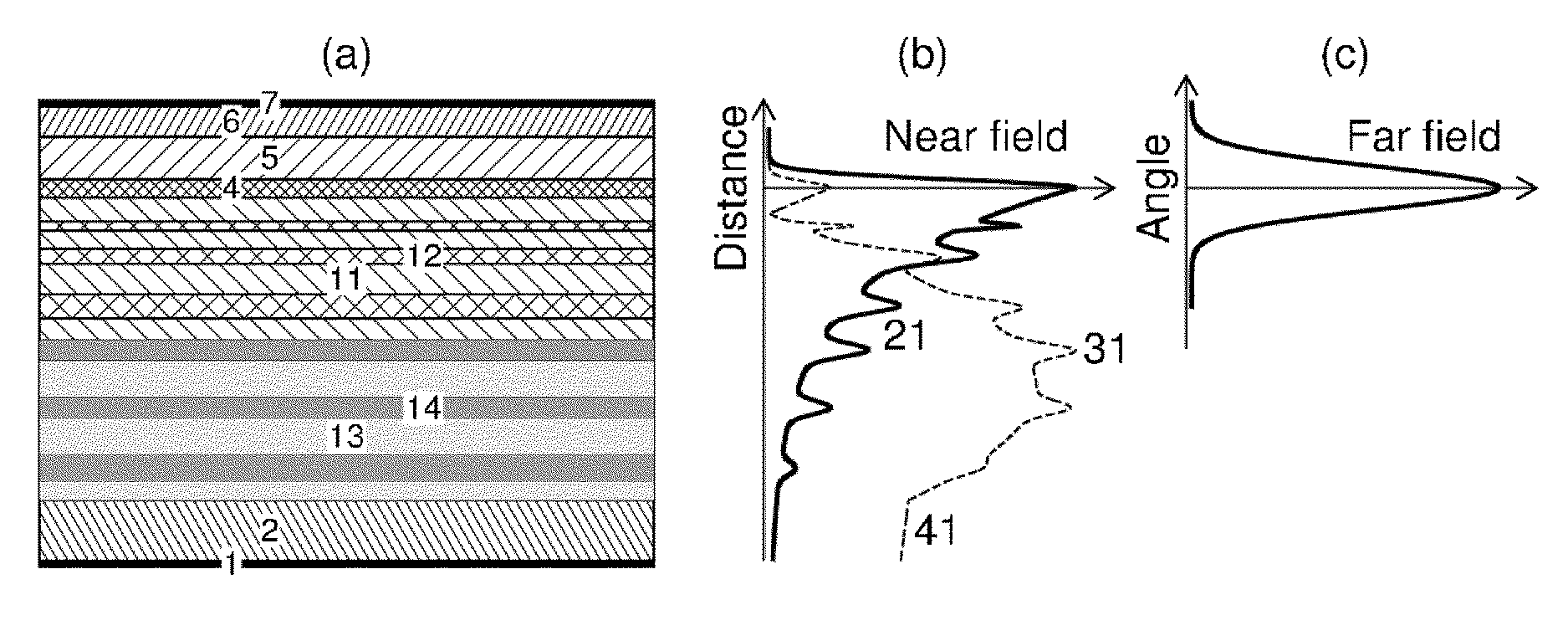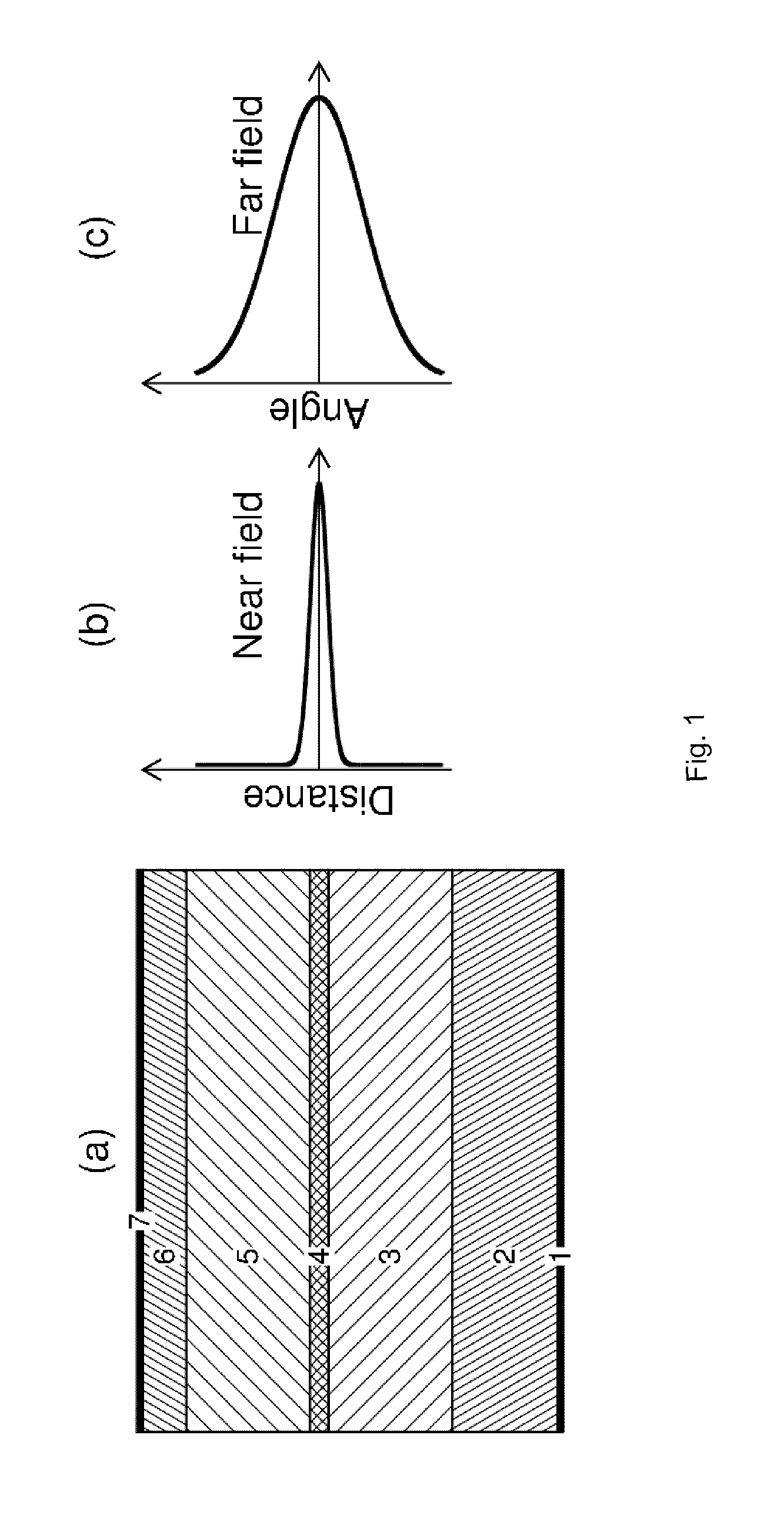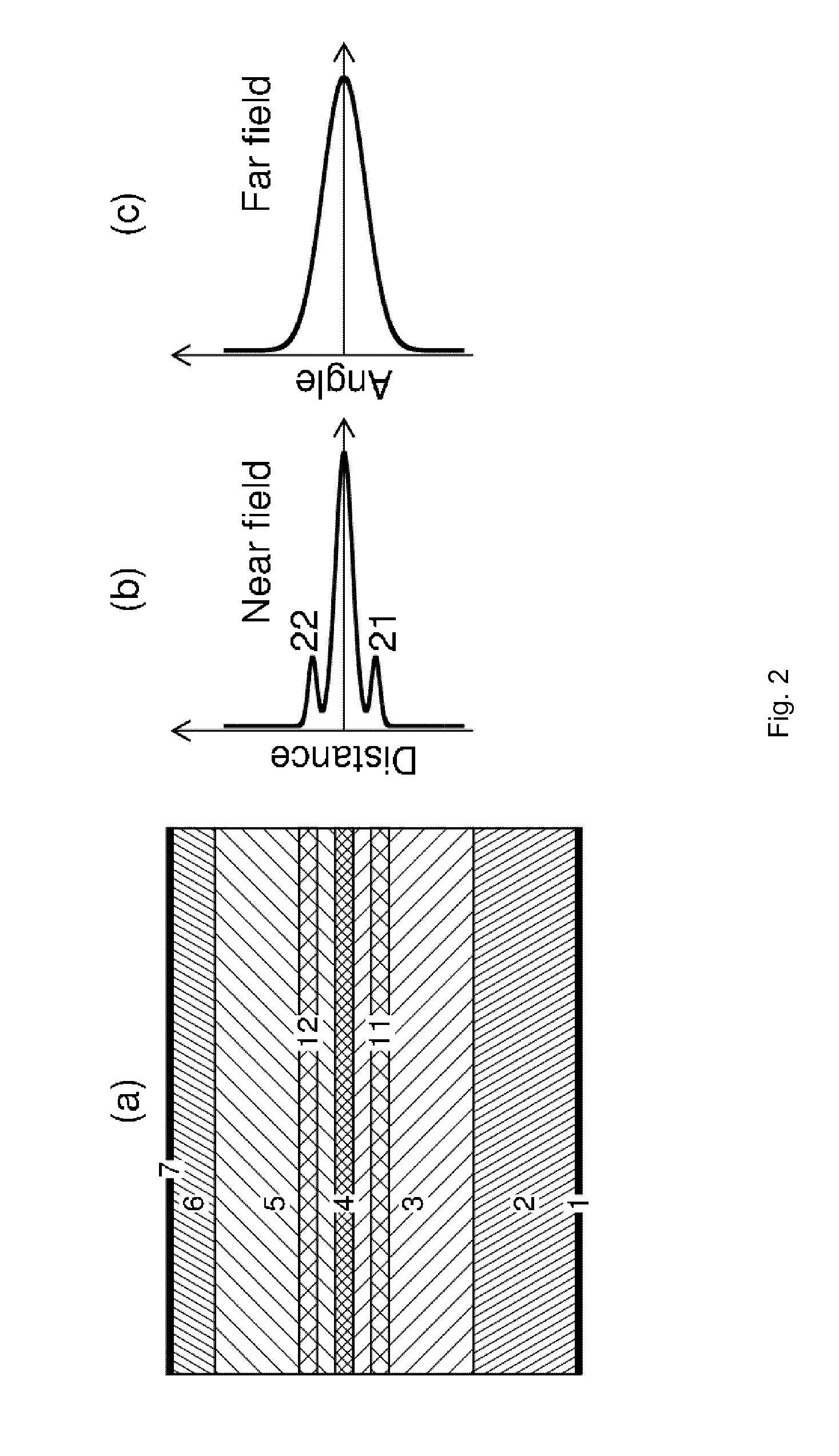Method and device for generating short optical pulses
a technology of optical pulses and optical pulses, which is applied in the direction of semiconductor lasers, laser details, active medium shape and construction, etc., can solve the problems of limiting the maximum achievable peak power of the laser, low average power in the order typical limited average power of a few mw, so as to achieve high power output, reduce power density per facet area, and reduce leakage losses
- Summary
- Abstract
- Description
- Claims
- Application Information
AI Technical Summary
Benefits of technology
Problems solved by technology
Method used
Image
Examples
Embodiment Construction
[0081]The preferred embodiments of the present invention will be best understood by reference to the drawings, wherein identical or comparable parts are designated by the same reference signs throughout.
[0082]It will be readily understood that the present invention, as generally described herein, could vary in a wide range. Thus, the following more detailed description of the exemplary embodiments of the present invention, is not intended to limit the scope of the invention, as claimed, but is merely representative of presently preferred embodiments of the invention.
[0083]FIG. 13 shows an optical device 100 for generating short optical pulses Pcomp. The device 100 comprises a single section semiconductor laser 110, an electrical control unit 120, and a dispersive element 130.
[0084]The electrical control unit 120 is connected to the single section semiconductor laser 110 and injects a DC current I which causes the laser to operate in a nonlinear regime. In this nonlinear regime, the ...
PUM
 Login to View More
Login to View More Abstract
Description
Claims
Application Information
 Login to View More
Login to View More - R&D
- Intellectual Property
- Life Sciences
- Materials
- Tech Scout
- Unparalleled Data Quality
- Higher Quality Content
- 60% Fewer Hallucinations
Browse by: Latest US Patents, China's latest patents, Technical Efficacy Thesaurus, Application Domain, Technology Topic, Popular Technical Reports.
© 2025 PatSnap. All rights reserved.Legal|Privacy policy|Modern Slavery Act Transparency Statement|Sitemap|About US| Contact US: help@patsnap.com



